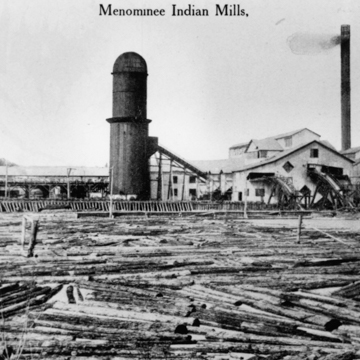The Menominees began logging after the treaty of 1854 made their 250,000-acre reservation permanent and, according to tradition, planned to harvest mature trees across the reservation to encourage new growth. In the late nineteenth century, the Menominees resisted pressures from lumber barons to sell their lands for clear-cutting and countered federal efforts to transform them into farmers by starting their first lumber camp in 1872 and their own commercial lumbering industry. To support the tribe, U.S. senator Robert La Follette introduced a law, which passed in 1908, to build a mill and extend tribal control over reservation logging operations. The U.S. Forest Service completed the sawmill at Neopit in 1909, but Forest Service mismanagement of Menominee logging and milling operations resulted in lawsuits that were not settled until 1951. Government compensation came at a steep price: federal termination of the Menominee Reservation in 1954. The former reservation became Menominee County in 1961.
After termination, the Menominees reorganized as a nonprofit corporation and transferred their 234,000 acres to Menominee Enterprises, which pursued a model program for sustained-yield forestry and tribal employment and thus supported the tribe financially. After a long battle, in 1973 the Menominees regained federal recognition as a tribe and won back their reservation status. Today the sawmill symbolizes sustained tribal identity and the successful efforts for restoration of tribal lands. The mill has undergone many changes over the years, particularly after a fire in 1970, but retains its overall configuration on the bank of the Neopit Mill Pond. A utilitarian steel structure replaced the pole framing and board-and-batten walls of the original mill buildings. Menominee Tribal Enterprises produces pulpwood and sawn timber, with a certified sustainable timber-management program. The Menominee Logging Museum is at the junction of WI 47 and County Rd. VV, Keshena.


